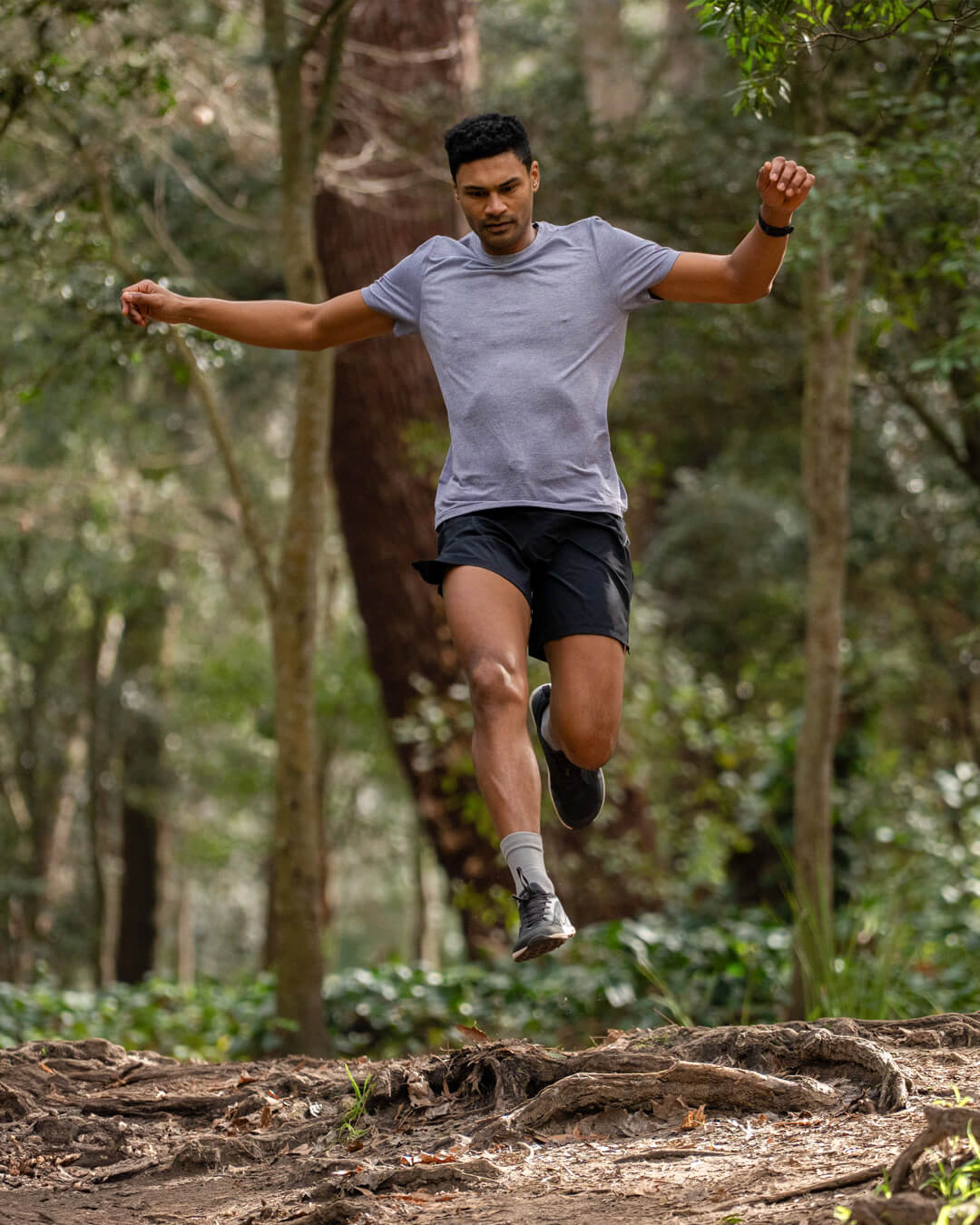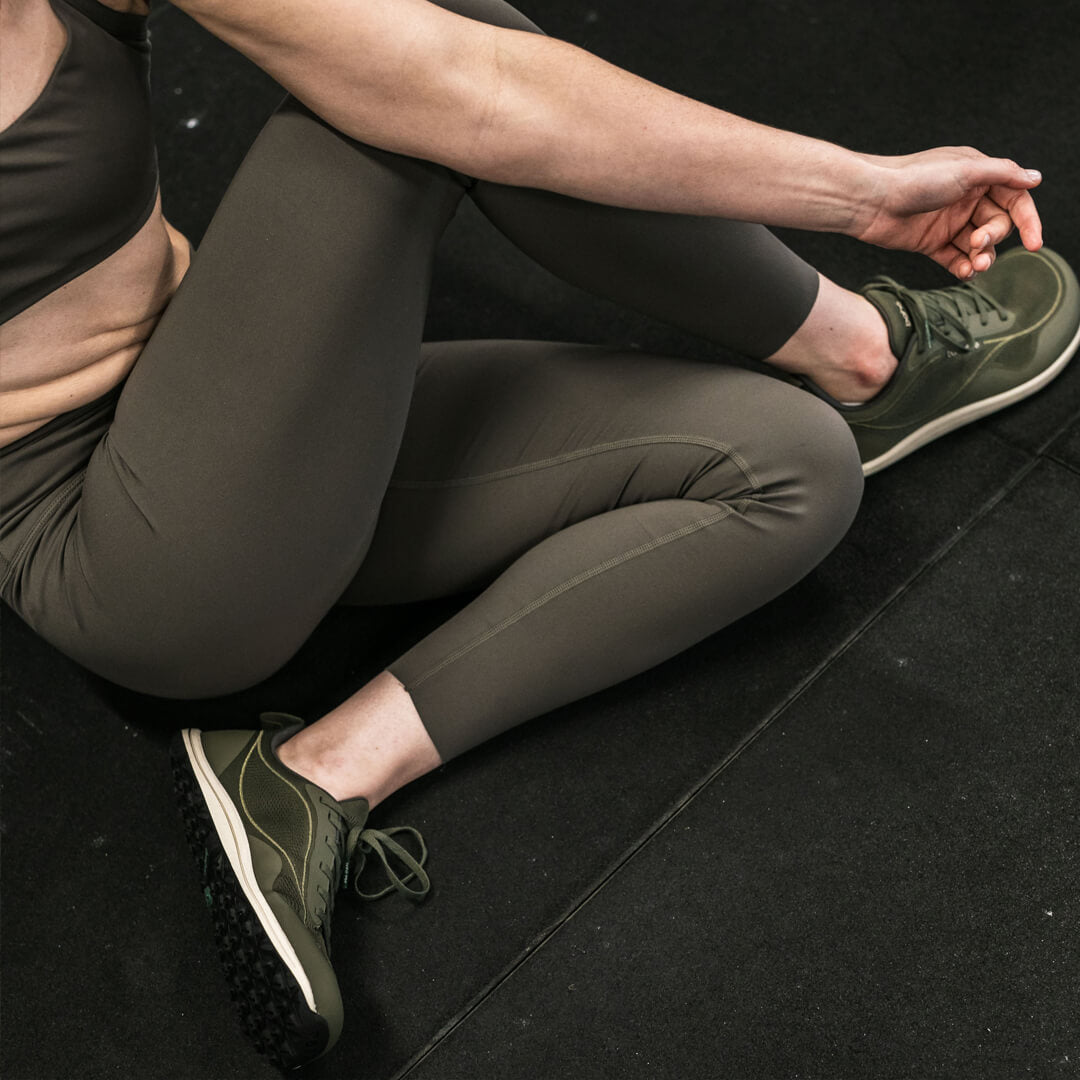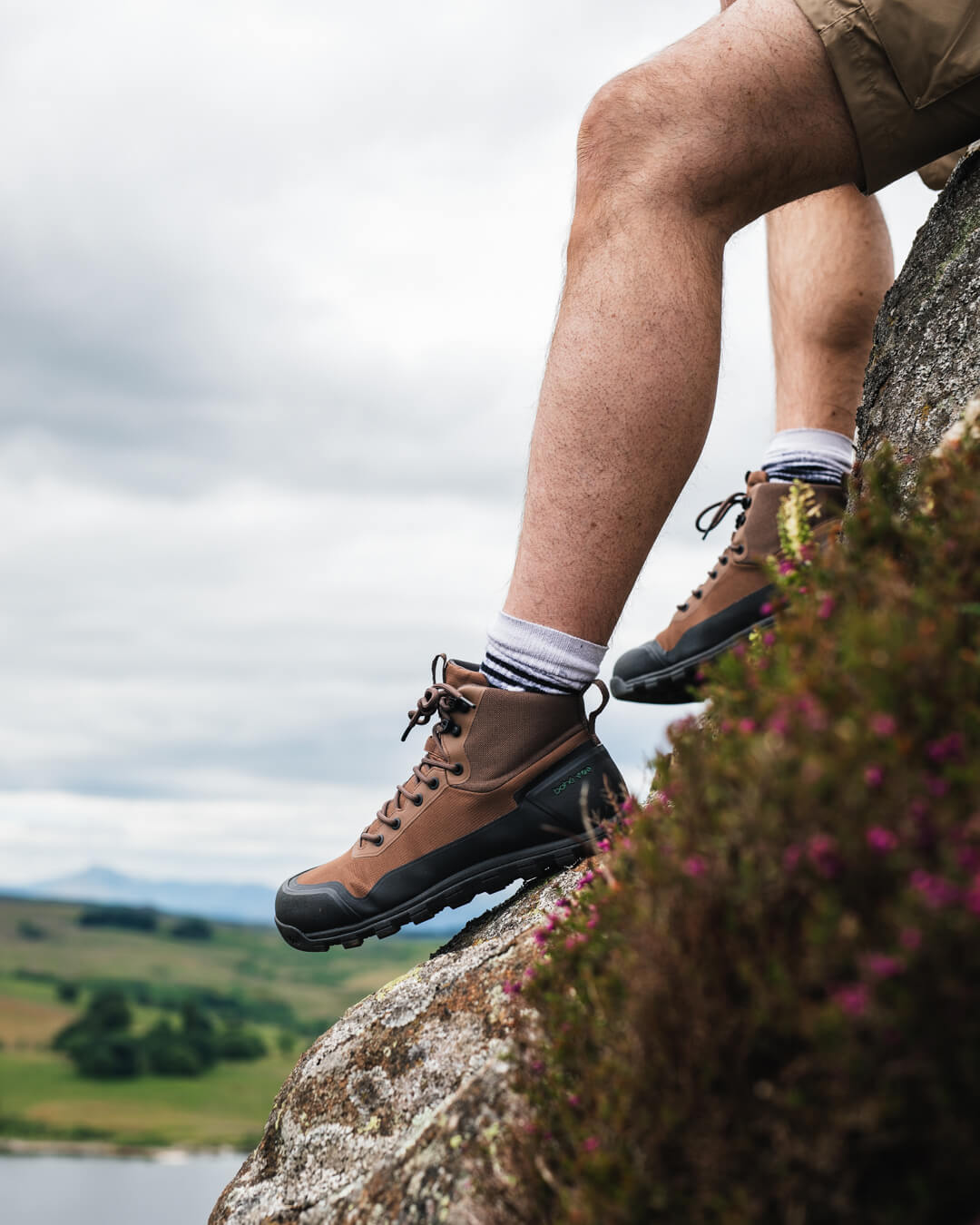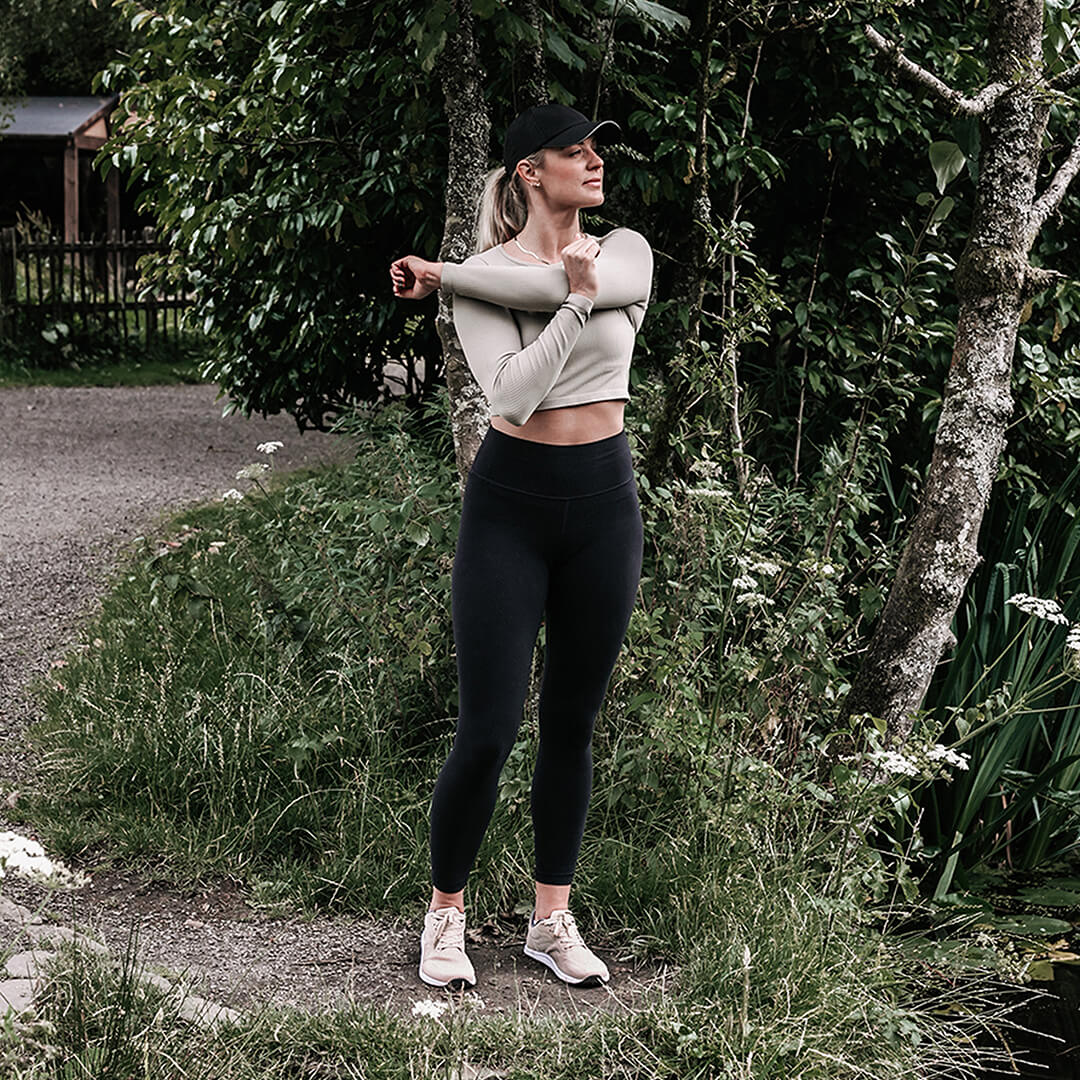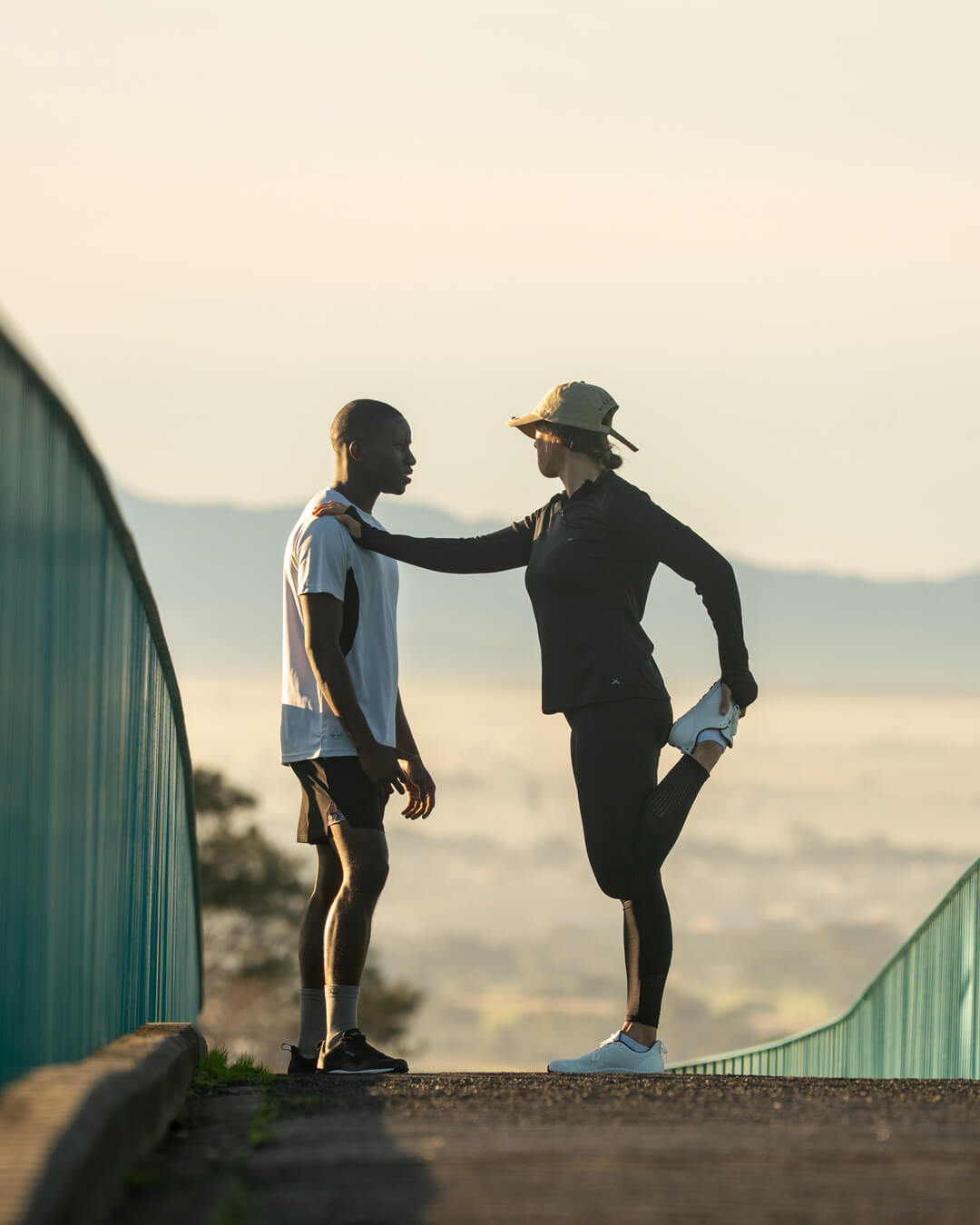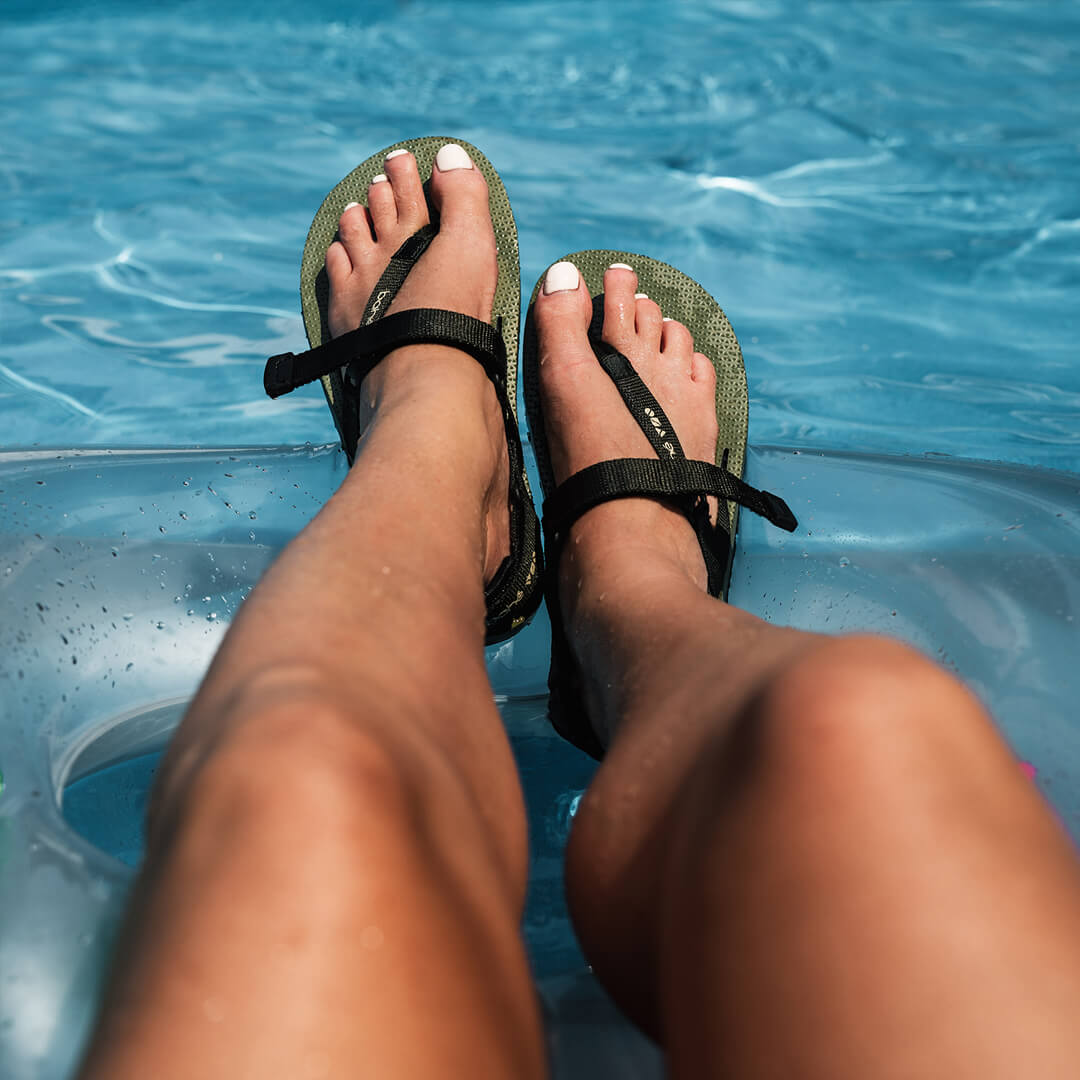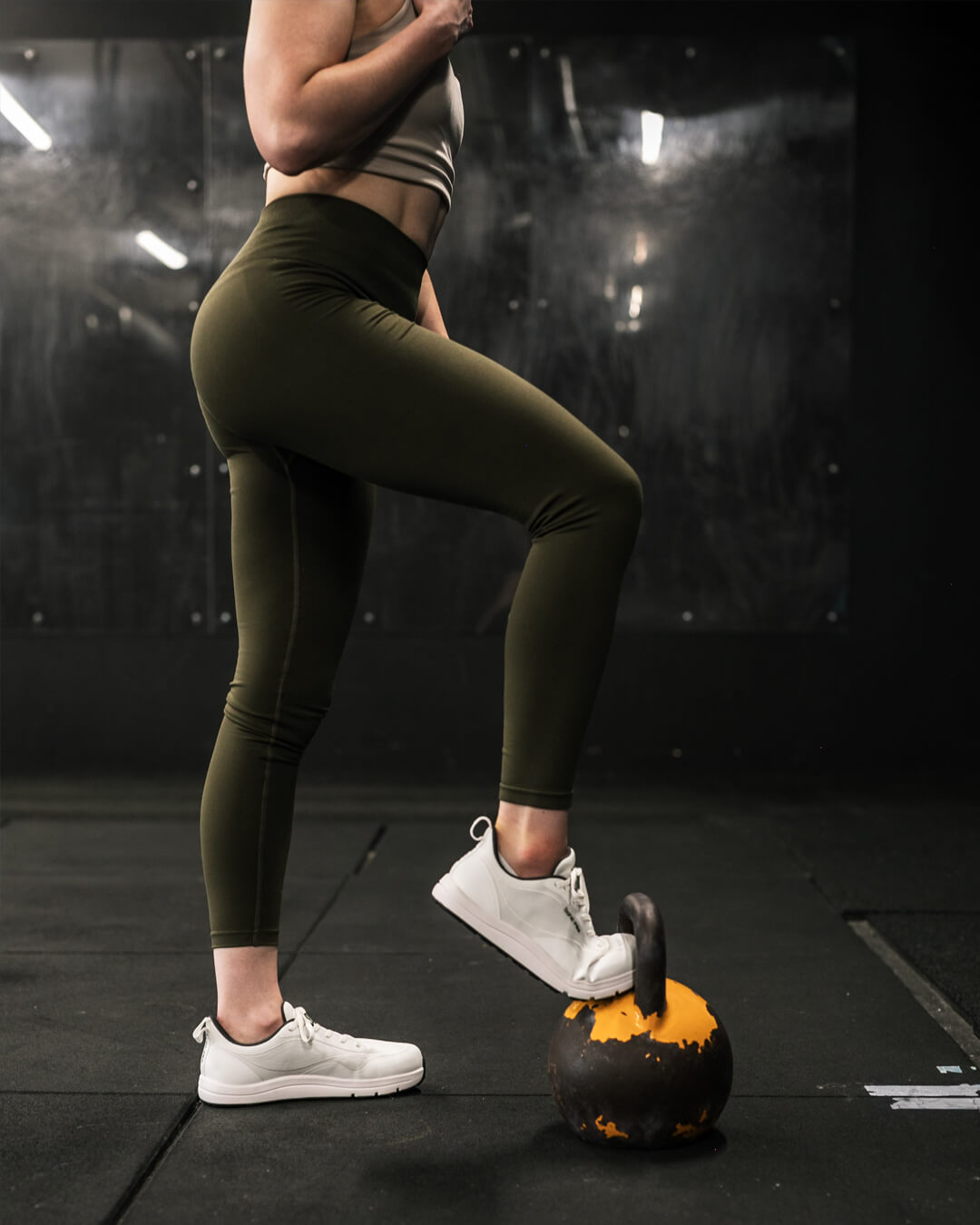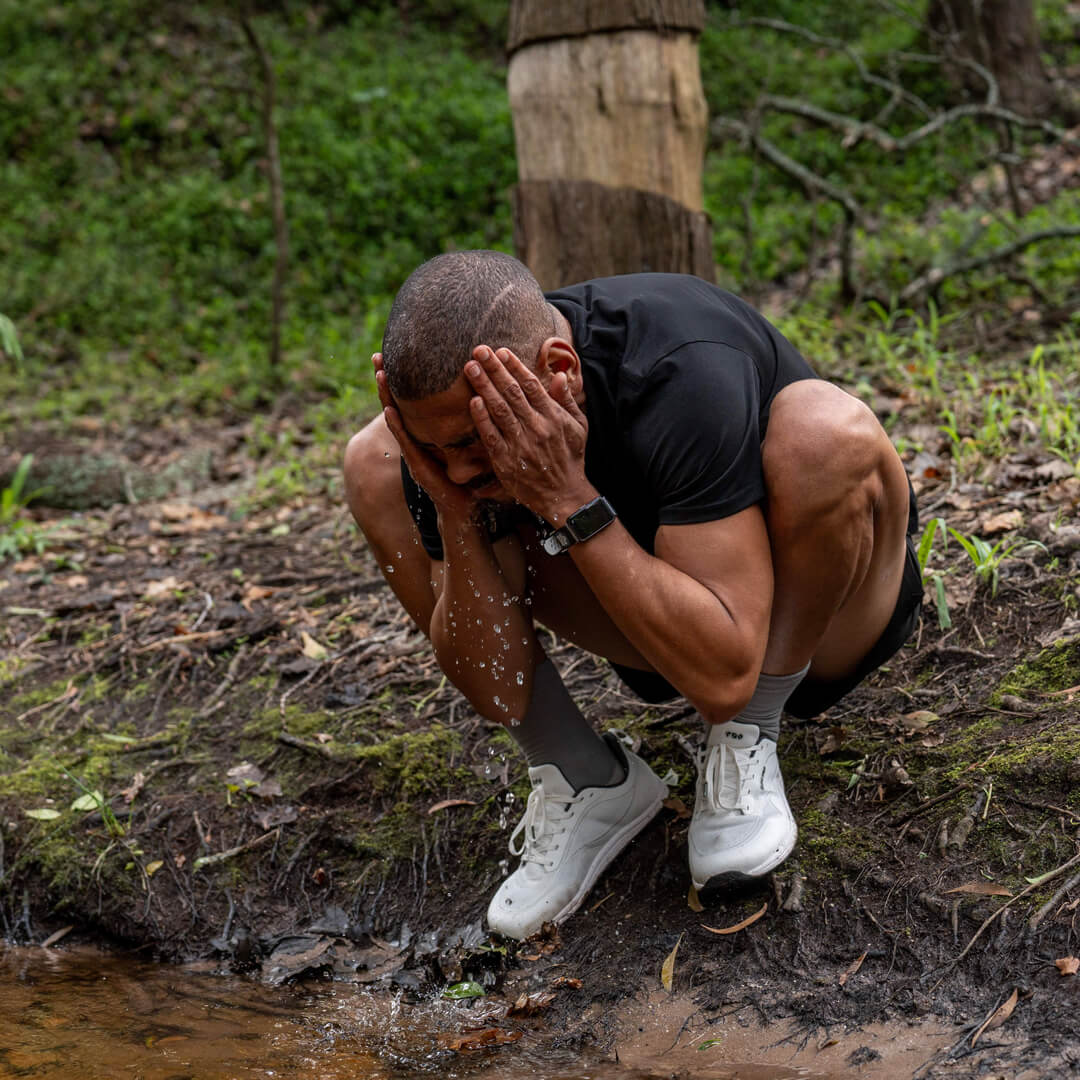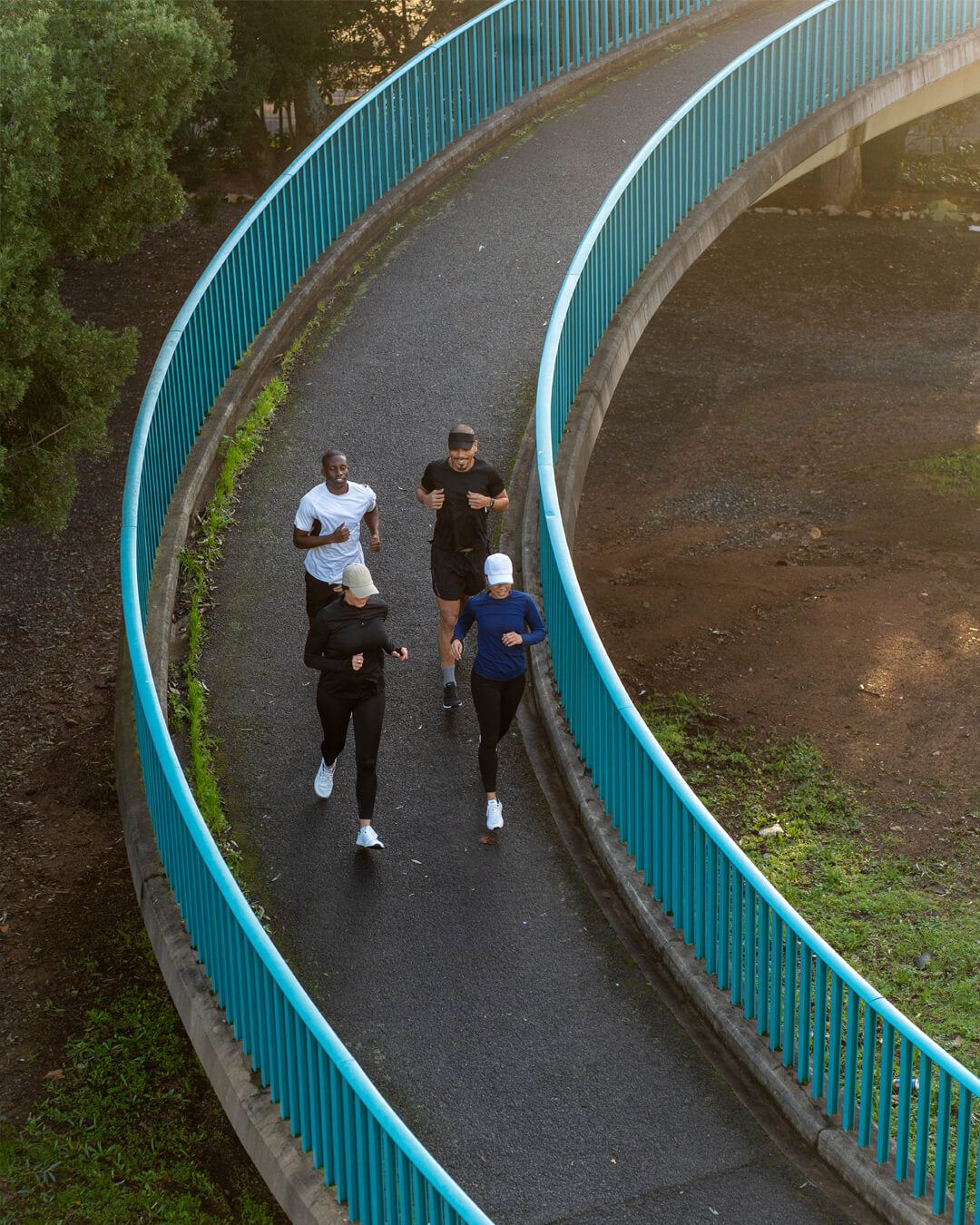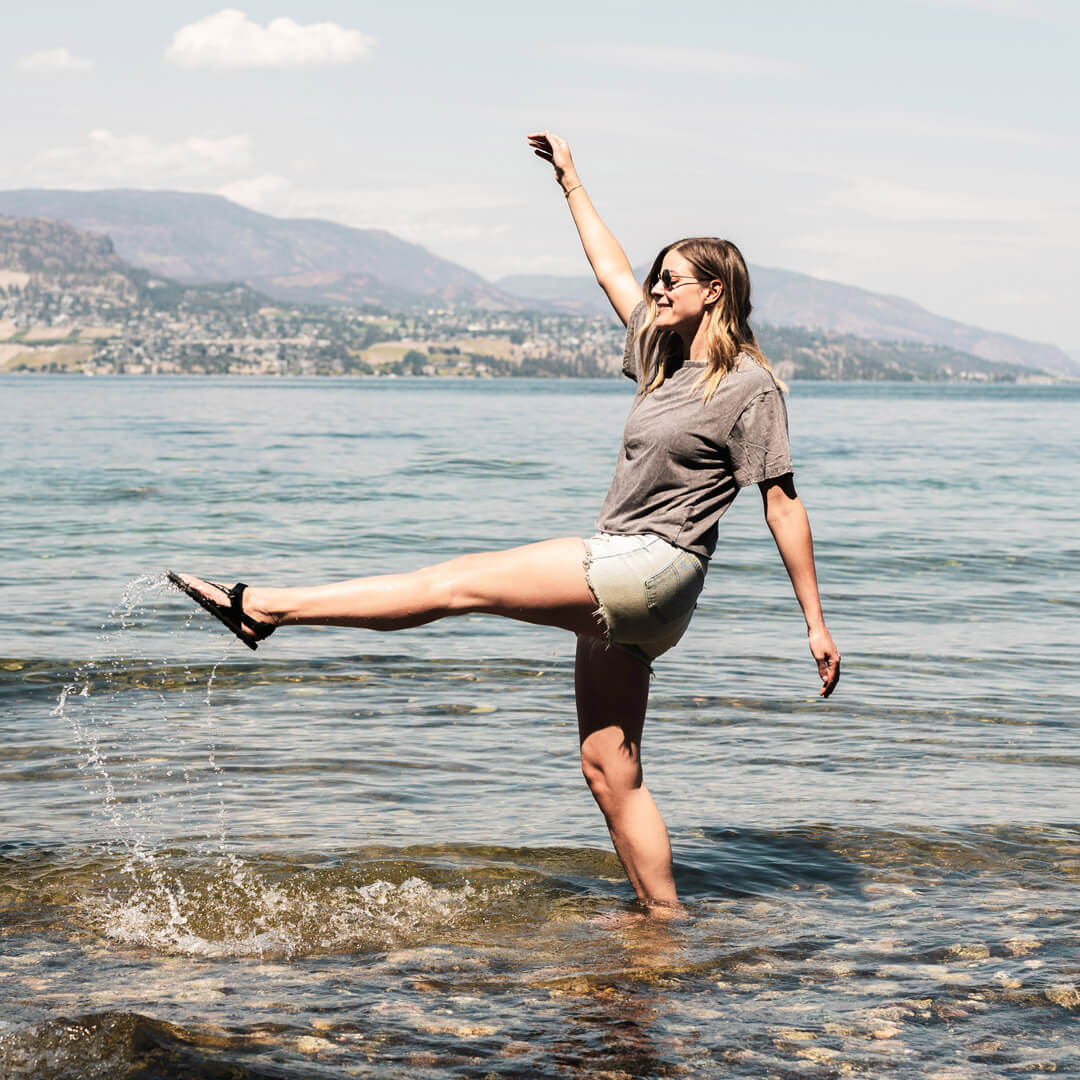1. How long does the transition to barefoot-style shoes take?
Transition times vary widely because switching to barefoot-style running is both a neurological and structural adaptation. Your entire body undergoes a gradual rebuild as you change the way you move. The most time-consuming aspect is adjusting to thin, flat, flexible shoes with a wide toe box for everyday wear, allowing your feet to function naturally throughout the day. If you grew up wearing traditional shoes with a one-inch heel—like standard school shoes—you will experience an even greater transformation.
Adaptations include lengthening of the calf muscles by about an inch, strengthening of the Achilles tendons and plantar fascia at its three insertion points, and postural adjustments throughout the body. A raised heel creates a negative cascading effect on biomechanics, meaning most people must relearn proper standing posture before even addressing their running form.
Heidi details these changes in depth, along with a dedicated chapter on what to expect during the running transition, helping you navigate the process effectively. The good news is that, although the building up of the necessary muscular infrastructure will take at least 12 months, your commitment will reward you with life-long good running, improved posture and injury prevention.
2. Should you immediately switch to the thinnest barefoot shoes, or use different types for various activities and transition stages?
Heidi has developed a strengthening program designed to prepare your feet and lower legs for this shift. We suggest following it for six weeks before making the switch.
We recommend listening to the feedback your feet and calf muscles provide and choosing the most minimal shoe you can comfortably handle. Rather than jumping straight into the thinnest option, it's often best to transition gradually. For many, starting with flat shoes for daily activities or work before running in them is a more manageable approach.
Additionally, while thinner shoes tend to be well-tolerated for everyday wear, a slightly thicker sole is preferable for running on rough, uneven terrain. The key is to match your footwear to both your activity and your current level of foot and lower leg strength.
3. How should runners modify their technique when first switching to barefoot-style running shoes?
Over time, modern shoes lead to many changes in both the body and running technique. The younger you are the less significant those changes will be. Therefore a young teenager who is already running with good technique could likely change with little adaptation. Most people we encounter also need to recover from any injuries they have and everyone needs to re-strengthen weakened areas before technique change.
Correct technique is vital if you want to run efficiently and we recommend rebuilding your technique to remove any errors and to get used to a smooth, efficient running action which will naturally be faster too! The technique-change system we have created is simple but it is a ‘journey’ as it takes time for the body to adapt. However, it is a life-long change to both technique and body strength and posture.
4. Are there particular stretches or strengthening exercises you recommend for runners transitioning to barefoot shoes?
Yes, because modern footwear—starting as early as childhood—alters the natural stresses on the body, leading to imbalances in muscle, tendon, and ligament strength and flexibility. To counteract these effects, targeted exercises can help restore proper function and alignment.
Heidi has expanded her strengthening program in The Older Yet Faster Book to focus on optimal body alignment. She not only teaches proper standing posture but also introduces a series of hip stretches designed to improve pelvic alignment. These stretches are crucial for correcting common leg and foot misalignments, such as bowed or internally rotated legs and pronated feet—issues frequently caused by conventional footwear. A structured strengthening routine will help prepare your body for the demands of barefoot shoes, making the transition smoother and reducing the risk of injury.
5. What common mistakes do runners make during the transition process, and how can they be avoided?
One of the most common mistakes runners make when transitioning to barefoot shoes is doing too much, too soon. Many get excited and push their limits without recognising the significant changes their body is undergoing. The transition isn’t just about footwear—it’s a full-body rebuild that requires patience and careful attention.
Another mistake is not listening to the body's feedback. Runners often expect to maintain the same distances they covered in cushioned shoes, but that’s unrealistic. To put it in perspective, Heidi—an experienced runner logging 80-100km per week—could barely manage 2km barefoot on grass before her calf muscles protested. She then needed several days to recover.
A good rule of thumb: If your calves take more than two days to recover, halve your distance and only run again once they have fully recovered. Your calf muscles aren’t just getting stronger—they’re also lengthening and adapting to a new, more vertical running action. Rushing the process can lead to injury and setbacks, but patience and gradual progression will help you navigate this transition. Your reward will be good posture, longevity and the potential for fast, injury-free running.
6. What signs of discomfort are typical during the transition, and when should a runner be concerned?
During the transition to barefoot shoes, discomfort is normal as the body rebuilds from the feet up. Expect soreness in the feet and calf muscles in the early stages. This is a sign that your muscles, tendons, and ligaments are adapting to new demands.
However, overdoing it can lead to more serious issues, such as calf muscle tears or Achilles tendonitis. Heidi has addressed these concerns in the rehabilitation section of the book, providing guidance on recovery if injuries do occur.
To minimise risk, less is more in the beginning. Prioritise short, high-quality runs with a focus on technique rather than pushing for distance.
7. How can runners assess whether they are ready to increase their distance or intensity in barefoot-style shoes?
When your calf muscle soreness has subsided and you’re no longer experiencing any new pains during or after running. At this stage, you can begin introducing higher-intensity sessions, such as the famous Mona Fartlek or 1km repeats.
During this phase, it’s normal to feel soreness in the hamstrings, glutes, and lower back, as these muscles—underused in cushioned running—are now strengthening. However, if you experience discomfort in other areas, it’s a sign that something may be off in your form or progression.
Many runners don’t adopt the technique they think they are using. Flaws in form become clear when analysed on video, which is why we emphasise getting a side-view video regularly.

8. What role does surface choice (e.g., road vs. trail) play in the transition to barefoot running?
Barefoot on smooth grass is definitely the preferred surface, with occasional diversions onto smooth concrete for extra precision. Otherwise a barefoot-style shoe, like Bahé Revives, that is flat, thin and flexible on road or not-too-rough trail is a good choice.

9. How does embracing barefoot-style running sculpt your physique and enhance your strength?
Changing to barefoot and barefoot-style shoes offers a unique opportunity to transform your movement. Imagine every run naturally strengthening your entire body, making tight muscles and common running pains a thing of the past.
Purposeful barefoot-style running naturally sculpts a balanced physique:
- Engaged Glutes: Feel a powerful, toned rear as glutes activate with every step, unlike the quad-dominant stride of traditional running.
- Defined Hamstrings & Calves: Develop strong, sculpted hamstrings and calves through balanced lower body engagement.
- Innate Core Strength: Build natural core stability as your body aligns, engaging core muscles without extra gym work.
10. Can you share any success stories from runners who have effectively transitioned to barefoot running?
Personal story—David’s transition
David Blackman, a runner with Southampton Athletic Club (UK) changed his technique with the help of his coach John Tilt after reading the first edition of Older Yet Faster.
This is his experience in his own words:
‘Patience is absolutely essential, and the more carefully you progress, the fewer potential problems you will be exposed to, and the greater the rewards will be. For best results, I recommend that you suspend your racing program or chasing those personal records, and start running slowly to get that gait nailed. Exactly how many months this takes depends on how drastic a change you are making. For me, I had 37 years of very bad over-striding to undo, so I found that the back-to-basics, slower-paced phase [Early Days stage] took about nine months, followed by another four months of easing on the speed [Muscle Rebuilding stage].
For long periods I was questioning the potential for success! But, for those runners requiring less dramatic changes, you may find you have successfully changed your basic style in two or three months, and added new speed by the time you reach four or five months. In one sentence: Start slow, be patient; later, ease-on the speed gently’.
For David, big improvements started to happen after 15 months [Reaping the Benefits stage]:
‘Four days after my fiftieth birthday, and 15 months after starting the Bateman–Jones journey [OYF Running], I equalled my 5 kilometre personal best/personal record from almost ten years earlier (16:37). In the same month, I also ran within 20 seconds of my 10 mile personal best/personal record (58:04), which I set in 1990 at the age of 23.’
Three years after starting his transition, David was still improving. At the age of 51, on 11 March 2018, he ran a lifetime best 800 metres in 2:07.64.

11. How may barefoot running influence long-term running performance and injury prevention?
Running close to barefoot, when combined with good technique, can lead to a lifetime of joyful, fast, and injury-free running—not to mention a strong, well-balanced body. For many runners, transitioning to barefoot-style running has been the solution to overcoming persistent injuries that traditional shoes caused.
However, proper technique is crucial. Common mistakes—such as ‘forefoot running’, ‘walking’ the feet forwards, ‘shorter, faster steps’, trying to keep the hips level, or constantly trying to ‘fall forwards’—can lead to injuries rather than preventing them. To fully reap the benefits of barefoot running, it’s essential to develop a natural, efficient stride.
For a deeper dive into common barefoot running myths and misconceptions, check out the ‘Myths’ pages on our website:
🔗 Older Yet Faster – Running Myths Explained
Summary
Transitioning to barefoot-style running is more than just a change in footwear; it's a holistic journey that rebuilds your body, refines your technique, and can lead to a lifetime of stronger, faster, and injury-free running. While it requires patience and gradual adaptation, the rewards—from improved posture and balanced muscle development to enhanced performance and reduced injury risk—are well worth the commitment.
Remember, this is a neurological and structural adaptation that takes time, often at least 12 months for significant muscular infrastructure to build. Listen to your body, start with minimal footwear for everyday wear before running, and prioritise short, high-quality runs focused on correct technique. Strengthening exercises, particularly those targeting proper alignment and hip flexibility, are crucial for a smoother transition. Avoid the common mistake of doing too much too soon, and be mindful of discomfort—soreness is normal, but sharp pain or prolonged recovery times signal the need to dial back.
Ultimately, by embracing the principles of barefoot-style running, you're not just changing how you run; you're changing how your body moves, leading to a more naturally balanced physique and a deeper connection to the ground beneath your feet. It's a journey that promises not only to transform your running but also to enhance your overall well-being.
Older Yet Faster (OYF) is a manual that teaches how to transition to efficient running and help avoid incurring almost all of the common running injuries as you do so. This inspirational book answers every technique-related question you might have and dispels the many ill-thought-out yet widely accepted ‘rules’ on running. It is ideal for beginners to learn how to run well, and for experienced runners to change over to good technique. Coaches can also use this book as a reference on how to implement technique change for their clients, and we expect it will become the go-to manual for medical and allied health professionals to help them deal with running-related injuries caused by incorrect technique and poor footwear choices. The book can also be a self-help guide for non-runners to heal common ailments holistically by following Heidi’s treatment methods.



